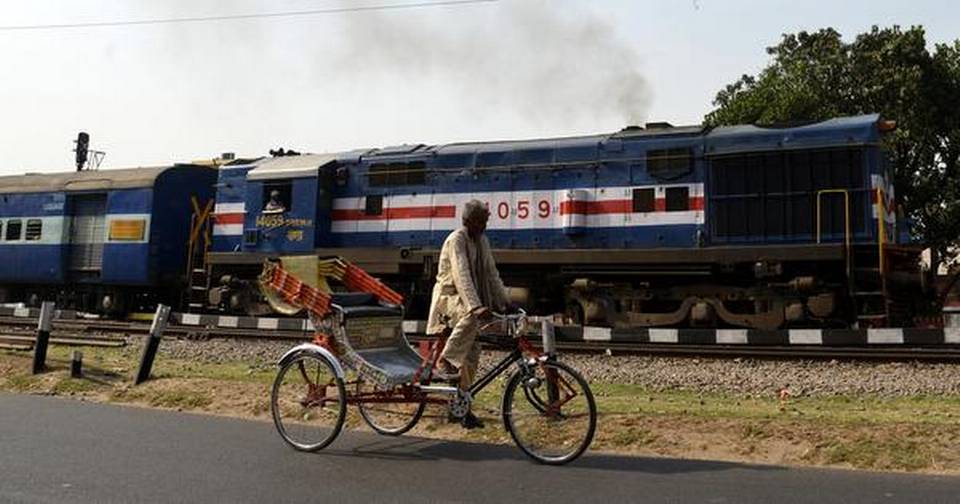There has always been water in Gorakhpur, and after the rains, if you take the train, you will find that a huge lake has taken over the horizon.
Gorakhpur is much in the news, thanks to the new Chief Minister—an object of both derision and confusion—a saffron-clad monk who is now the chief executive of the most populous state in the republic. Few know his past, fewer still the town he has represented as a Member of Parliament since 1998. There was only one major column devoted to Gorakhpur written by a senior journalist during the Uttar Pradesh (U.P.) elections, and it was all about the decline of eastern U.P., and the horror that the town has become, a place from where everybody wants to escape.
And yet, is that not the story of many of our small towns, the failure of the dream of modernity in the soft soil of our past, and the revenge of the past—through the subalterns that have risen to power on the promise of caste and religion? That is how metropolitan India speaks of them, and yet, those that come from such places have different stories, a different view of history.
River of diamonds
It is the water, the fields and the farms that are my first and strongest memories of Gorakhpur. From the roof of the chavni, where I stood with my grandfather in the early morning light, I saw the Himalayas. You could still believe that Gorakhpur had been registered by the British as a “hill station”, however they qualified it. I remember the water that came gushing out of the tullu pump in which we cousins bathed, running pure and clear into the fields, glittering like a river of diamonds.
It is the water for which the place is known, most prominently the Rapti, a wriggling snake of a river, which flows into the Ghaghara—that great river that originates from Mansarovar in Tibet and empties into the Ganga. There has always been water in Gorakhpur, and after the rains, if you take the train, you will find that a huge lake has taken over the horizon, with small villages stranded on patches of land rising out of the silver sea.
Water is wealth in an agricultural area, and Gorakhpur has been populated forever. It is believed that the Buddha’s mother came from the area, the daughter of a Sakya chieftain in the 6th century B.C. The Jain tirthankars also found their way to these areas. Here flourished gantantras—village republics with elected leaders. We do not know how democratic these really were, but if Athens—the vast majority of whose people could neither vote and whose slaves had no rights whatsoever—can be called the “cradle of democracy”, these gantantras too can make such claims.
Rich mounds unearthed during the colonial era give us a list of dynasties that ruled here: the Mauryans, Sungas, Kushan, and Guptas. When the Chinese monk Hiuen Tsang visited India in the 7th century A.D., this area was under the rule of Harsh of Kannauj, and dense with forests.
As the centre of India moved towards Delhi, it was a Rajput ruler, Raja Sattasi, who established himself in the area in the 13th century. As Afghans, Mughals and the Sharqi dynasty of Jaunpur battled over the land over the next centuries, the descendants of Raja Sattasi would occasionally manage to reassert themselves and rule.
None of this is evident in Gorakhpur today. We know nothing of its history. Some make the connection to the ‘Kanpatha (torn ears, from the large earrings they wore) Naths’, of whom Guru Gorakhnath is remembered and whose temple the new Chief Minister heads. Few remember the yogic ideas that made the community so popular—a challenge to both Islam and conventional Hinduism—or that everybody, from Man Singh of Jodhpur to Prithvi Narayan Shah of Gorkha, paid homage to the Nath yogis. Gorakhnath was from the Gorkha dynasty, and legend has it that a Nath yogi vomited his blessings over the feet of Prithvi Narayan Shah, leaving only one toe untouched—indicating that the dynasty would last only up to nine generations. Even Aurangzeb is supposed to have written to them—to their Jakhbar temple in Rajasthan—for procuring treated mercury.
Unknown borders
In Gorakhpur, though, the yogis were not as prominent, until mahant Digvijainath shifted its politics to that of the Hindu Mahasabha in the 1920s. Before that, much would happen. In 1801, the East India Company carved out Gorakhpur as the first province from Awadh. While the British made much of the Nawab’s bad management, history records say that it was the East India Company that took loans and grants from the Nawabs to fight their wars from Burma to Kabul. Taking Gorakhpur was dangerous for them, and they fought first with the forest-dwelling banjaras, and then with the Gorkhas in the Anglo-Nepalese war of 1814-15.In truth, nobody knew where the border lay. There are fortresses with Gorkhali writing in Maharajganj district, just north of city limits. The border was contested even in earlier times. Muazzam Shah—the eldest son of Aurangzeb—who would rule as Bahadur Shah, came there to catch rebels from Jaunpur who had declared independence. Since he did not wish to disturb the border, his expedition was called a “grand hunt”.
The length of the encampment was so long that a number of soldiers would settle there for good—so Turkmanpur is the area where the Turcomen soldiers stayed behind. The town was known in Mughal records from 1700 until 1801 as Muazzamabad, after the prince.
The largest landholder was Mian Sahib, the hereditary noble of Shia faith whose descendants have led the Muharram juloos from 1790 onwards. The British did not know what name to put in their records. In the end, they decided to stick to Gorakhpur, after the temple.
The British could not command loyalty. The Sultanate and Mughal overlords had an institution called madad-e-ma’ash (help of the people), that gave land grants to learned persons loyal to the court. This created a dynamic artistic class in the far-flung regions.
The British found this out to their cost in 1857, when they were thrown out of Gorakhpur. For about a year, the area functioned as a liberated zone, under the leadership of Mohammed Hassan of Jaunpur, and the generalship of Bandhu Singh, a satrap of Raja Sattasi, all under the name of the feeble Mughal Emperor in faraway Delhi.
Hanging rebels
The British had their revenge. From 1858, from the great tree next to the Jama Masjid built by Muazzam Shah, the British serially hanged “rebels”, until Queen Victoria declared an amnesty in 1860. My great grandfather was eight years old, and reportedly the eldest male of his family left. Bandhu Singh’s lands were distributed to loyalists who helped suppress the 1857 uprising. It does not end there. In 1921, Gandhi spoke at a rally in Gorakhpur, one of the largest ever held. There were people of literature there, including Premchand, who resigned his government job thereafter. Poetry didn’t die. Raghupati Sahay, better known as Firaq Gorakhpuri, one of the pre-eminent Urdu poets of his time, kept alive Gorakhpur’s name until his death in 1982. Nor did rebelliousness die. It was the people who Bandhu Singh had once ruled that rose up in Chauri Chaura.
There was Amrita Sher-Gil, too, whose great works—‘Woman on a Charpai’, ‘View from Majithia House’, ‘Mother India’ and ‘The Little Untouchable’—all date from her stay in her family’s estate, Saraya, in Gorakhpur. She captured a reality of Gorakhpur—as well as its shocking poverty—that is still stark today.
There is much more to tell of Gorakhpur, its dacoits, the railway and its mafia, the chusni mangoes, the Gita Press, and the politics of Shibban Lal Saxena (of the Kisan Mazdoor movement) who represented Gorakhpur in the Constituent Assembly debates, and was injured in the anti-monarchy movement in Nepal.
There are the songs the fisherfolk sing, the Bhojpuri films, the poverty that now blights it, and the curfews when the agitation to destroy Babri Masjid began. Like every small town of India, Gorakhpur’s history is of infinite stories, and like all small towns of India, these stories are rarely ever told, or heard.
The writer’s last book was The Kingdom at the Centre of the World: Journeys into Bhutan.


